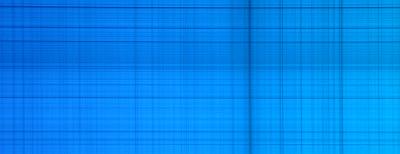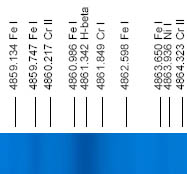I derived the background from an image taken through a homebuilt spectroscope at Ryerson Observatory.
Here's a couple of crops of the same image:

And another one: Blue solar spectrum
I have a link to a PDF of an analysis of the absorption lines here:
http://www.kwasan.kyoto-u.ac.jp/~kamio/archive/spectrum/hb_1st.pdf
The sharp line just to the left of H-beta is Fe I, or unionized iron, for instance. I resized the image to match the scale on the PDF (at least how it appears on my computer); putting the two together gets you identifications of the lines in my image.

It isn't perfect--on the spectrum I did a motion blur in the vertical direction to smooth out noise, but I know everything is not perfectly vertical (I think there is some curvature of field in the spectroscope, and probably in the camera lens). In addition, the hydrogen beta line is definitely not symmetrical.
It's kinda neat that you can say there's iron, nickel, chromium, cobalt, titanium, and even maybe vanadium in the sun, yes?
I'm not sure I'm keeping this design, but for the moment it stays.
2 comments:
Hi Dean,
Nice spectrum -- can I ask about the horizontal lines in the spectrum? That must be some kind of instrumental effect?
Yep. The slit of the spectroscope is vertical, and any variation in width along it will change the amount of light coming through, creating the horizontal lines. The smallest horizontal lines are likely from dust particles on the slit; bigger variations are from nicks and manufacturing defects. When looking at the solar photosphere like this I kept the blades nearly touching--probably a few microns apart. A simple particulate would act like a boulder at that distance. It's tough keeping two razor blades precisely aligned blade to blade!
Post a Comment